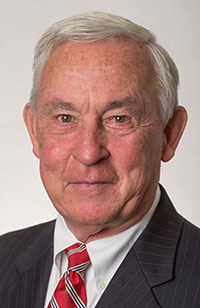Building ASME’s Foundation for the Future: Part Two
Building ASME’s Foundation for the Future: Part Two
May 26, 2017

To the ASME Community: Greetings Once More!
As promised, I am pleased to have this opportunity to continue with the second of three articles we began in the last edition of ASME News under the rubric Building ASME’s Foundation for the Future. Last time, I had the chance to introduce you to the process that was initiated this year: ASME’s project to re-engineer the way it serves its historic mission and engages its members and stakeholders in order to create a truly world-class professional engineering organization for the future.
One way to understand great engineering is as the successful execution of great design. And you might say that great design itself is a marriage of practical understanding of what we know works with a vision of what’s possible. To design and engineer a great ASME for tomorrow’s world, our volunteer leadership and senior staff have worked tirelessly to gain deep insight into our success to this point — our heart and soul — and to envision a truly empowered ASME of tomorrow. The first result of their work was the formulation and official adoption last year by ASME’s Board of Governors of a new and overarching enterprise strategy — a great design for ASME’s future. The crux of that work was the Governors’ charge to us all, and it bears repeating here:
“By 2025, ASME is called upon to be the go-to organization to help address key technology-related challenges in the public interest in a manner that engages core engineering constituencies (government, academia, industry, engineers, students, and technology-development professionals); to increase its mission impact as measured by reliable metrics...”
Simply put, ASME had to be ready to change and to grow in the following ways: we had to enhance our relevance and impact among our global constituencies by becoming the “go-to organization” for advancing engineering technology; we had to improve our products and services in both our traditional and new areas as well as our product sophistication; and we had to improve our engagement of members and stakeholders and deliver value at every level. Realizing the Governors’ design is what we’ve been about this year.
At this point you likely know that to do it, ASME elected to prioritize its present and future efforts around five “core” engineering technologies which we believe represent significant areas for the future development of mechanical engineering. They are:
- Pressure Technology
- Advanced Manufacturing
- Robotics
- Bioengineering
- Clean Energy
By focusing on these areas and engaging more directly with members and other stakeholders, we will provide the basis, broadly speaking, to build our product and services portfolio that will over time position ASME as the “go-to organization” in these vital technologies of the future.
How do we build this foundation? Less broadly known but not less important, ASME’s staff and volunteer leadership recognized that to foster the world-class excellence we seek, ASME had to strive for increased excellence in our “ground game.” Day in and day out, excellence, engagement and value for stakeholders are simply indispensable to ASME’s future success.
To foster such excellence and to take our organization “from good to great,” we had to operationalize the new strategy. In a transformative initiative, the staff and volunteer leadership, working with the Board of Governors, defined a set of linked 10 year – 3 year – 1 year goals that would guide all of us to achieving our vision as a “go-to” technology leader. Underpinning this initiative is an Integrated Operating Plan that will guide us to build our capabilities and provide outstanding products for our members and constituents that meet these 10-3-1 goals. These efforts will insure our continued focus on technology and our professional foundation, further strengthening ASME’s heart and soul!
At the same time, to support the implementation of the strategy, we formed five Presidential Task Forces for the 2016-2017 term to address the practical challenges of achieving such excellence, in the following areas:
- Strategy & Planning (Chair: John Goossen)
- Student & Early Career Engineers Engagement (Chair: Terry Shoup)
- Industry Leadership Engagement (Chair: Stacy Swisher Harnetty)
- Group (Divisions and Sections) Engagement/Alignment (Chair: Rick Marboe)
- Building a High-Performing Board (Chair: Bill Wepfer)
The as yet untold story of the 2016-2017 term, in my view, is the tireless work of all who served on these Presidential Task Forces this year. Your colleagues, some 50 or so ASME volunteers and staff who served and made them possible, have met either weekly or biweekly all through this year in the effort. They have worked their hearts out, reviewing our organization from top to bottom to an unprecedented level of detail and formulating detailed recommendations based on their review. Their recommendations to the Board of Governors have been so extensive that two full extra meetings of the Board were instituted just to consider them all. I will share more of the nitty-gritty of those recommendations, which are really the marching orders for ASME’s next chapter, in my next letter to you. How’s that for a cliff-hanger?
Till then, please accept my thanks and best wishes for your dedication to our great Society. We are well on our way to that bright future — will you join me?
With all best wishes —
Keith Roe, ASME President
Read Part One of President’s Roe series on Building ASME’s Foundation for the Future.




